COMMON CARP
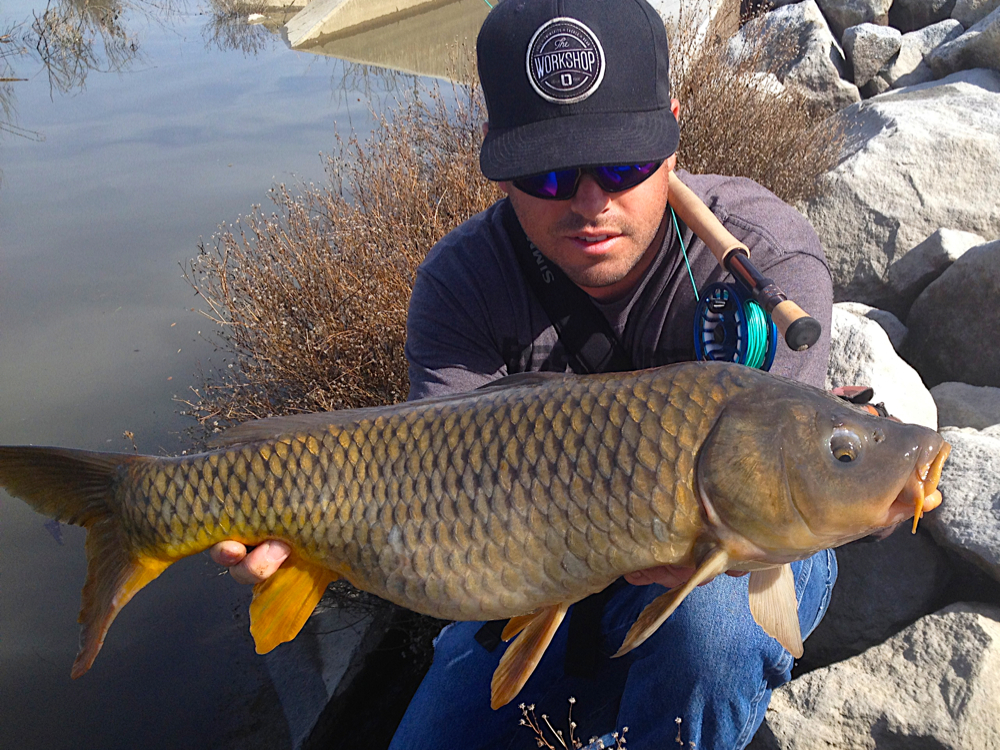
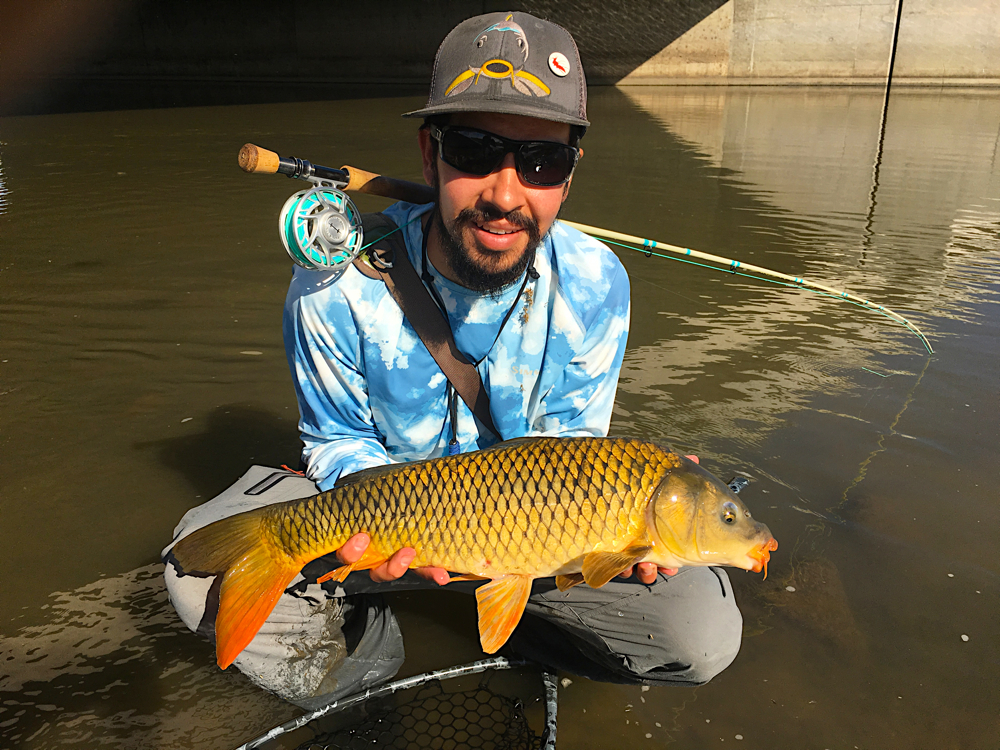
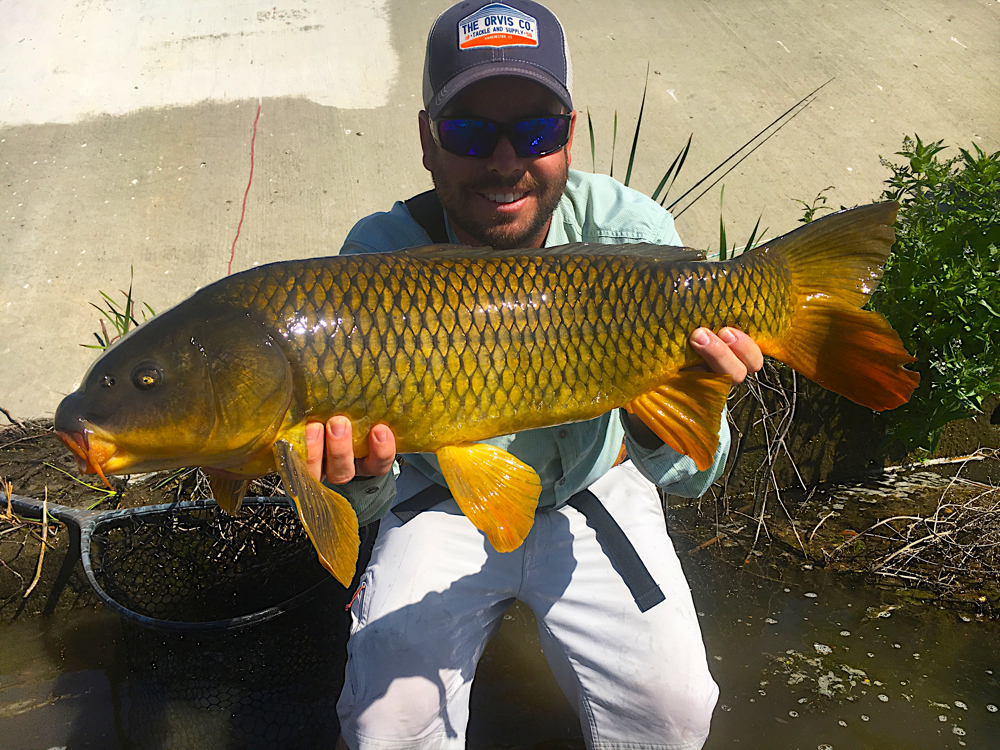

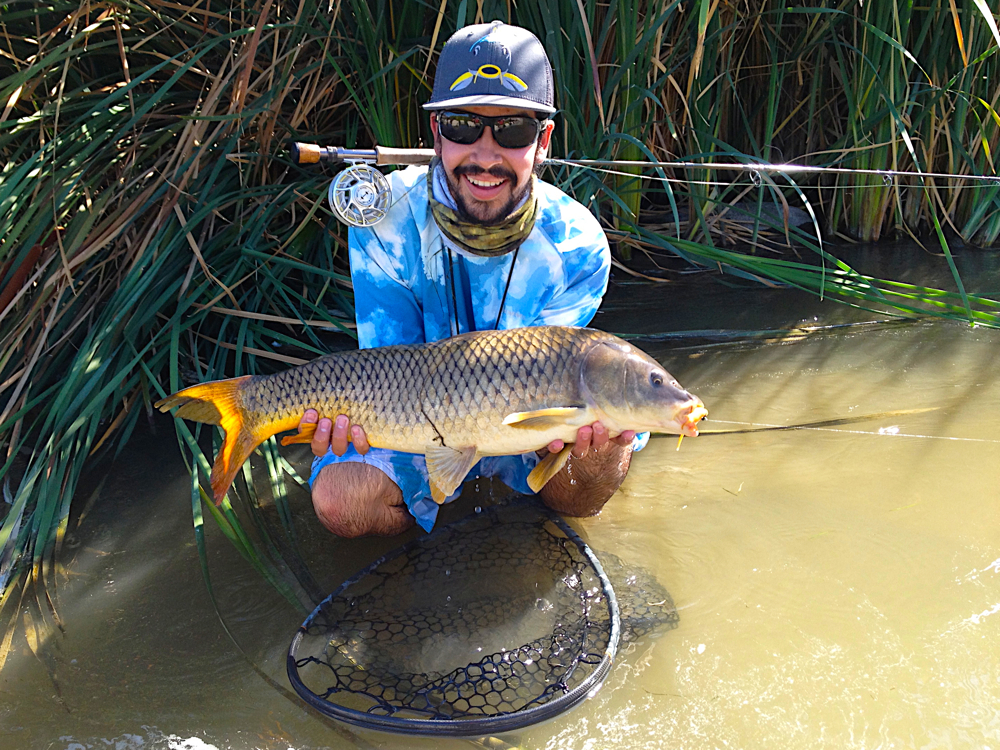
The first species of carp that we are going to cover will be the common carp, and they will be found in nearly every body of water that could hold carp. They will also give the beginner a great starting point in learning the different types of techniques used pursuing them. With how spooky these fish are you will rarely want to cast or put the fly directly in front of or on top of them. "Leading" the fly to the fish will be the most productive presentation to them.
The hard part is trying to figure out where they will be going next in their feeding pattern. You are going to want to have the fly already placed in position or just falling into sight as they approach the area where you have presented the fly. Due to the faster current a heavier weighted fly will be needed to get down to the carps feeding zone.
The flies can have various diameters of lead wrapped around the shank of the hook or dumbbell eyes can be used to get the fly down in the faster current. For the lead wrap either .015 or .020 lead wire can be used or 5/32 dumbbell eyes or larger depending on how big of a pattern is being fished. In most of the river systems with the faster currents the carp will behave similar to trout. They don't want to burn up more energy than they are able to eat in return. So any current breaks in the water, rocks, sand burms, fallen trees or various sorts of man made obstacles that can create a current break. This way the fish are right in the zone of where there will be a constant flow of food, and just within a kick of their tail into the faster current.
Carp will usually be feeding over two different types of river bottom, and both types will have different prominent food sources in them. With the sand and light gravel bottoms most of the food sources will be various source of crustaceans, insect nymphs, and aquatic worms or vegetation debris.
When they are feeding over various vegetational bottomed rivers a lot of the time they are eating the vegetation itself or sifting through it to find aquatic worms and clams. Carp are almost always bottom feeders, this can be seen by the downward vacuum shaped mouth that they have. Sucking up any food source and sifting out the bottom gravel or mud, leaving a "mud cloud" trail behind them. If the carp are feeding aggressively enough their tails can be sticking out of the water called "tailing", another easy spotting technique. Spotting these mud clouds is one of the ways to detect where these fish are at and feeding, while still being a good distance away from them. Once the cloud is seen look up river and see what the carp is doing in its feeding pattern. These fish will usually stay in one area once they are feeding as long as they are undisturbed.
So sparing a few seconds to stop and observe what these fish are doing to better approach them is a good idea. Are they constantly feeding in one spot? Or is the fish moving forward as they are eating, slowly getting further and further away?
A lot of different scenarios can present themselves when chasing carp and stopping to see what they are doing can make or break a fish caught or lost. Ideally approaching them from behind and presenting a fly in a way that it will drift right in their feeding path will be ideal. If the fish are further out river and not close enough to the bank casting will have to be done to get the fly to the fish. In that case being careful to not "line" the fish, meaning you don't want the fly line to float directly over the fish spooking it. Although the approach is from behind casting to the fish at an angle will allow the fly to be placed properly without spooking them with the fly line. Depending on the distance and the water clarity you may not be able to actually see the fish eat the fly.
Judging when to set the hook when carp fishing is another aspect of this sport that gets easier with time and experience on the water. When the carp suck up the fly they have a distinctive "body language" or what I call a tail twitch. If the water is clear enough and your able to see what the fish is doing, they will usually turn to the side or look like they are grabbing something. Rarely will you do a "trout" set on a carp. lifting the rod or just coming taught to the fly will end up with a hook up.
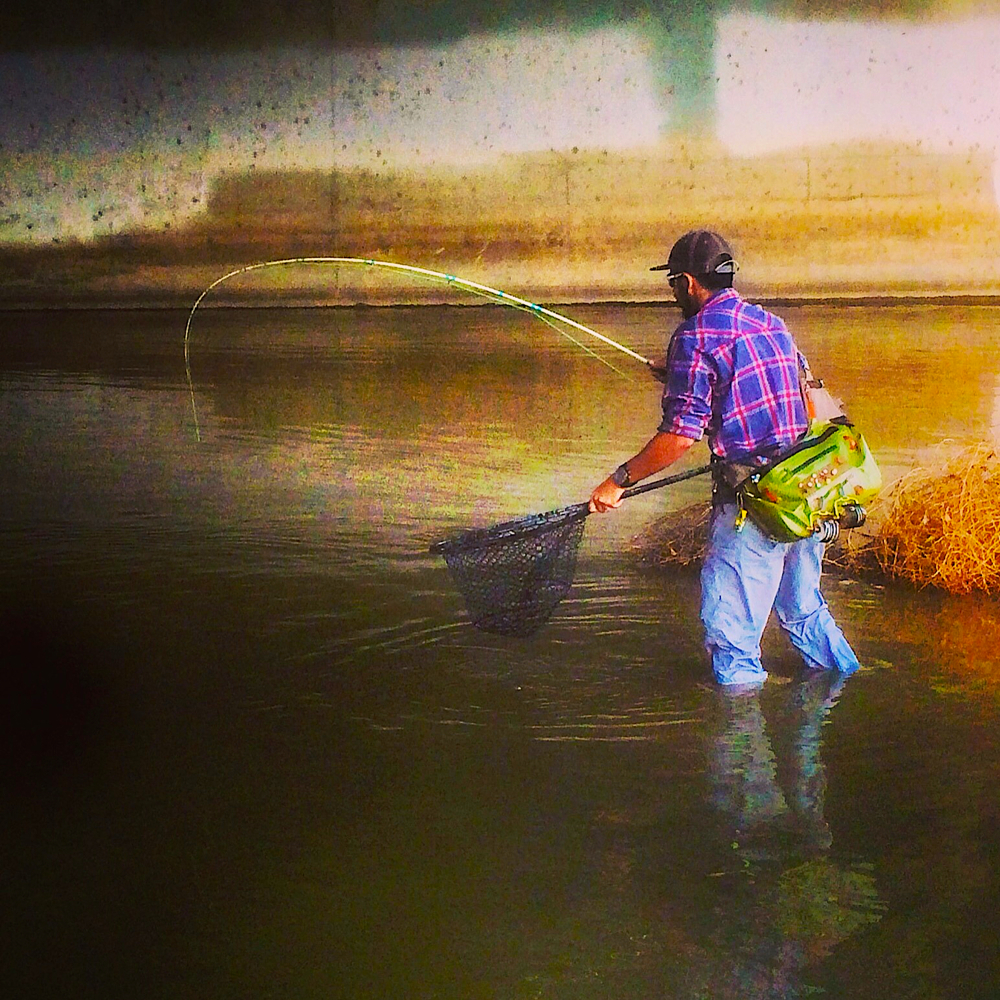
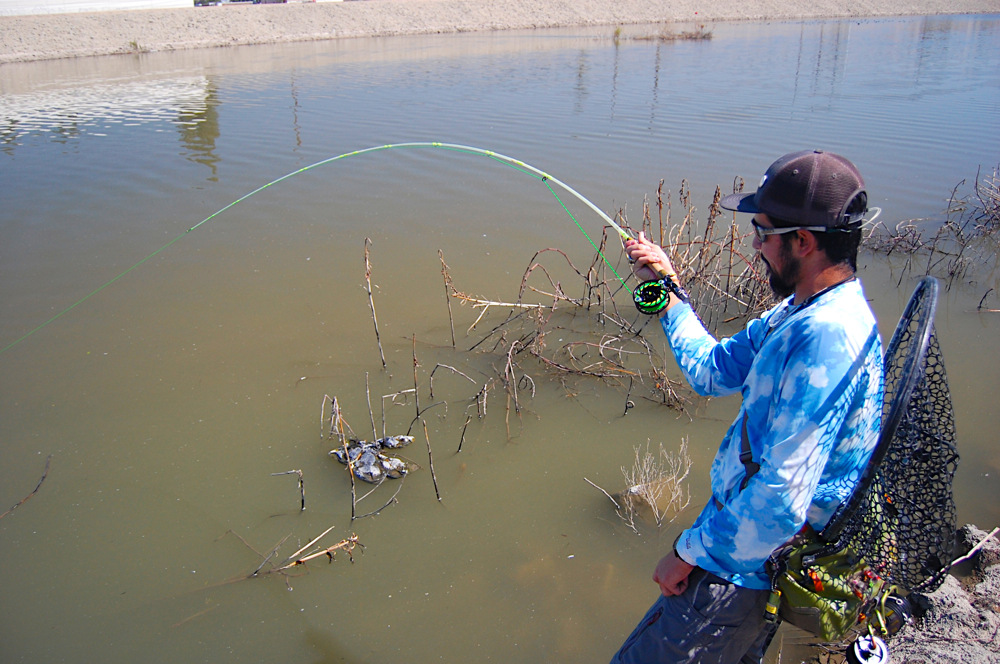
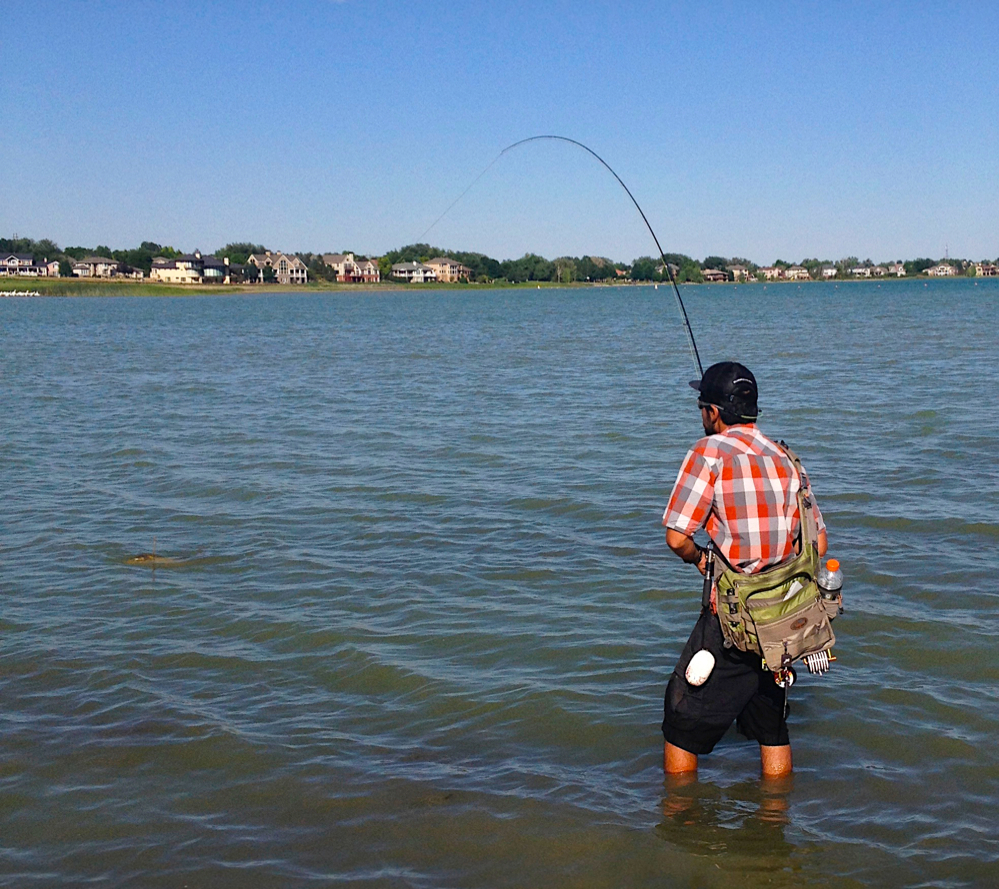
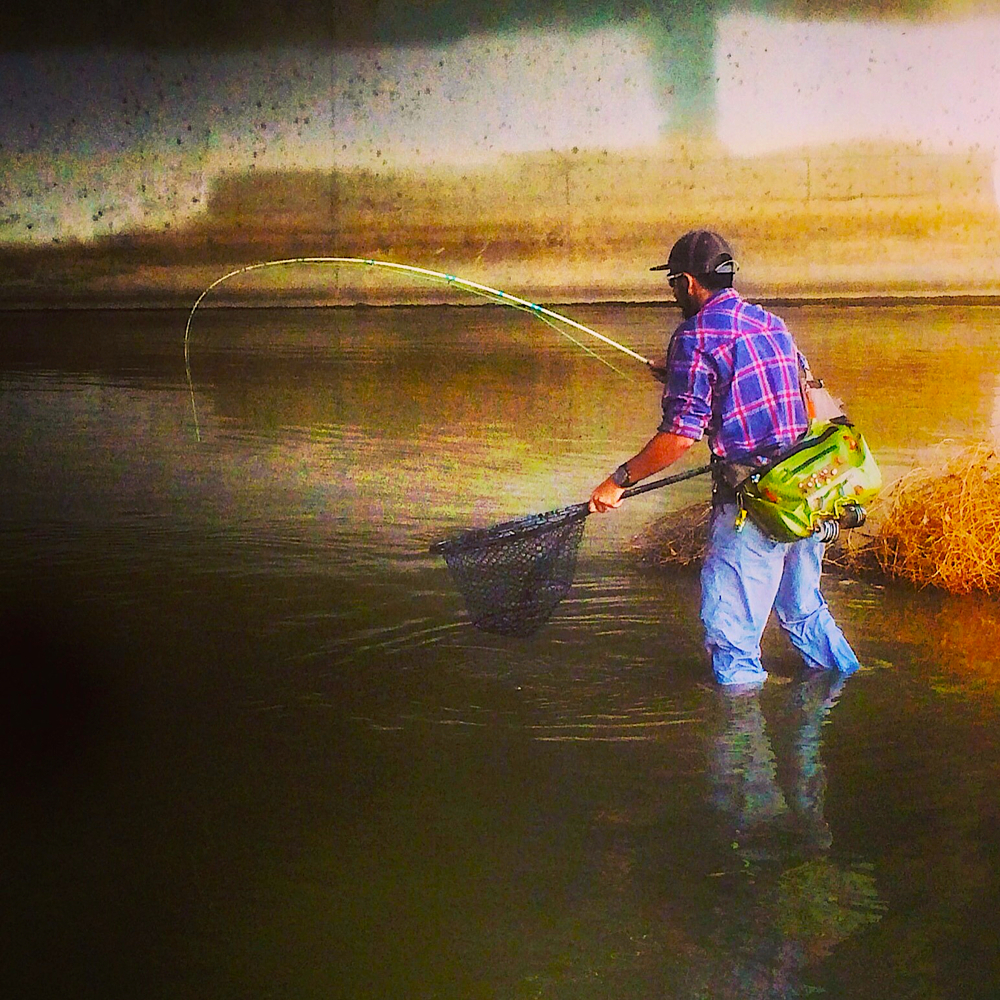
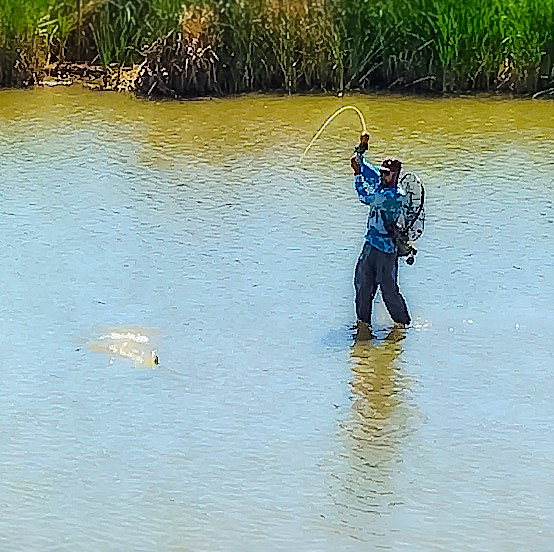
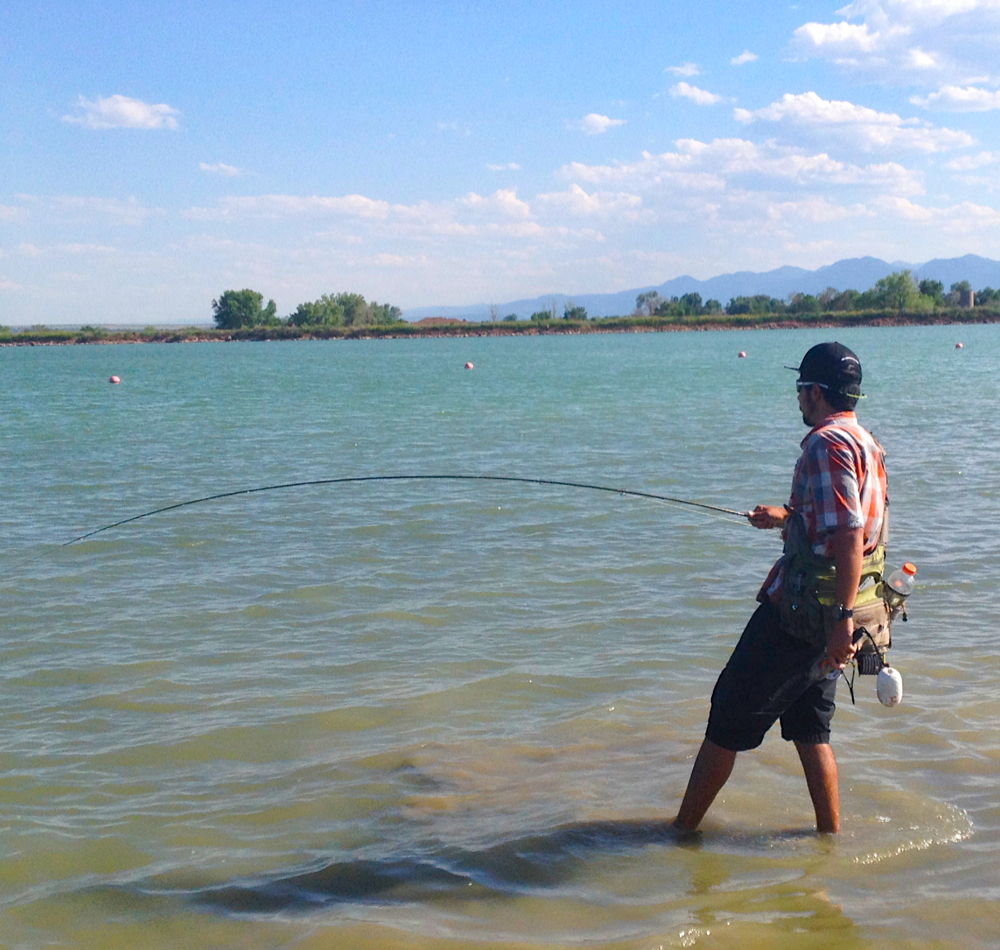
Drastically setting the fly can pull it right out of their mouth and blow the chance at the fish. With a lift of the rod or just coming taught even if the carp hasn't taken the fly yet the slight pull away can imitate the food source fleeing from the carp. Making them actually chase the fly down for a few inches and give you an aggressive take and may be one of the few times that you will actually feel the take.
In a lot of the rivers weather it be an urban drainage river or a natural river in which carp have become part of the fish in the river, techniques for catching carp can be applied in both. Unless a majority of the river is shallow the fish that will be targeted will either be near the shore or on any sort of sand bars or flats in the river.
The mudding carp near the banks will be the easiest ones to cast to and the best bet at a hook up. I try to always walk from down river up river, this way the fish will be less likely to see you as you are approaching them from behind. When you are walking along the river try to avoid any hard footsteps or any sort of running. The vibrations produced from your foot steps can easily spook the fish and blow up the spot you are in. If it is available as in the banks of the river are clear of brush or any other sort of obstacle that would make it harder to get access to the fish. Slowly walking up behind the fish and getting within what we call "dapping" range. Where you just drop or dap the fly in front of the fish, not so much of a cast but a swing of the fly into position. This way you have an almost non existent splash when the fly enters the water and you can put it directly in the spot that you want. It is hard to get that close to a carp so in the beginning stages of chasing carp it will take time to get good at this and not spook the fish.
When dapping you are almost doing the equivalent to tight line nymphing for trout, following the fly down with your rod letting it drift naturally with no drag. Earlier in the morning and later in the afternoon an hour or so before sunset the carp really seem to push towards the banks and this technique produces very well once mastered.
When it comes to dapping the brush or structure on the side of the banks can be a hindrance, but there are also times where the structure will be of use. The aquatic insects in their immature stages will be found around or on the vegetation or structure. Thus producing a potential gold mine of a food source for the fish. When they are feeding on the insects the reeds or structure will be moving, most of the time rather noticeably as the plants are shaking and can be seen from a distance.
Other times if you are quite you will hear them sucking on the reeds and it just sounds like a slurping sound. In these applications the longer rods can be useful, for having more reach and being able to present the fly without having to get into the water and risk spooking the fish. If it is possible sliding the fly down the reed and kind of bouncing it up and down in front of the carp will almost always produce a take. The tricky part is once the fish is hooked and takes off that he doesn't run right into the reeds and get tangled up and break off. Since the reeds hold such a good food source any sort of little cove or indentation along the river bank with reeds around it is a good place to check for carp.
When there are reeds that are present during the summertime although it may be a good food source it can also be a place for them to hide. If the reeds are rather thick the carp can hide inside of them and intertwine themselves in it. So when approaching the reeds do so with caution, poking your head through or moving the reeds can spook any fish hiding in them. Another use for the switch rods when they are reeds present behind you is better casting ability. With the structure behind you a normal length rod will snag the line on the forward stroke of your cast. With the extra length of the rod it will help you keep the line above the reeds and prevent it from snagging.
In any body of water as the water is moving over structure weather it be rocks or any sort of man made obstacle it creates bubbles in the water. In the slower sections of the water over time it will create a layer of foam on the surface of the water. This foam will usually accumulate at a stopping point of the water, again within any sort of structure. In the coves or any sort of blockage, weather it be created by branches or sticks in the water or the corners of a man made damn. In this layer of foam there is a mass amount of nutrients for the fish. The fish see this as easy access to get a source of food with little to no energy being out putted and lost. All they have to do is sit beneath it sucking up all the surface film and whatever nutrients are trapped in it. This out of all of the ways to catch carp has to be the easiest in the sense that the carp are hard to spook when they are feeding this way. You can get right on top of them and by just watching where your shadow falls they can't see you underneath the layer of foam.
When the foam presents itself sit and watch it for a little while, if there are carp beneath it they will show themselves. You will see their lips coming through the foam and at times hear a sucking sound while they are feeding. The way to fish for carp when they are feeding like this is to just have a rod lengths worth of line out and drop the fly right in the hole they created when feeding on the foam. Just as in the tight line version of fishing for trout you will feel that distinctive "bump", set the hook once you feel that no need to pause for a moment like in other scenarios. What is also nice about the foam is that due to the cover it provides you can sit and watch them feed for a while to pick out which carp you want to target.
Naturally we will usually try to pick out the biggest one, so looking for the biggest mouth in the line up is understandable. The foam lines tend to be the hail mary's of the carp world, when every other way of catching carp has failed if there is foam present and they are feeding its almost a sure thing to hook up. Usually after rainfall the water levels go up and the water usually get mucked up pretty bad so sight fishing is near impossible. After a rain fall the foam will tend to be more prominent and where most fisherman would think to not hit the river it may be worth a look when carp fishing.
Although carp can be found through out various sorts of river systems a majority of carp can be found in lakes. Lakes will have seasons in which carp will be catchable on the fly, where as with conventional fishing year round is possible. In the winter seasons when the water temperatures start to drop the carp seek out the deeper water out of site. Come spring and summer time they will come into the shallows and the banks around the bank of the lakes to feed.
The carp will usually be feeding in 3-5 feet of water and at times even shallower than that. When fishing a lake try and choose a fly line that is of natural colors, nothing bright. Since there is minimal to no current in a lake the fly line is a factor in spooking the carp. Even in water that has been mucked up pretty bad from the carp feeding and mudding around. The bright colored fly lines will spook them and blow the carp that are feeding. Since they are feeding in such short depths of water a majority of the time bead chain eyes will be used on the flies. This way a more natural sink presentation is acquired and they don't spook from the fly hitting the water. There are some patterns that need dumbbell eyes to make the fly stand up right once on the bottom. If this is the case cast a few feet past where you see the carp feeding and once your fly hits the water drag it to the carp. This way the splash from the fly hitting the water doesn't spook the carp and you can slide the fly into place.
For the other various lighter flies that will be chosen to throw at carp, due to the lighter weight the carp will have to be "lead". Meaning that depending on the water depth, weight of the fly, and how fast the carp are moving while they are eating will judge the distance the fly is placed above the carp. In this aspect sitting and watching the carp for a moment is almost a must and is greatly beneficial. This way you can see how consistently the carp are feeding and get a good guess as to where they will be within the next few feet of their feeding lane. Casting the fly with enough distance to sink and fall within a 10-12 inch radius of the carps mouth depending on water clarity.
Detecting when the carp takes the fly is tricky, and with time and experience it will get easier to read the fishes body language. I call it a body twitch, its like and eager quick burst of movement or a turn of the head in a direction other than their normal feeding lane. Detecting when they have taken the fly is something that will just have to come with time as it is hard to visualize from just a written description. Once the fish has taken the fly strip set instead of the usual and instinctive trout set. This way if the carp hasn't taken the fly and you strip set it is less likely to spook the fish. Pulling the fly straight up from trout setting looks completely un-natural and spooks the fish. In a strip set since the fly is being pulled at a different angle and along the bottom of the lake it can look like the potential prey is trying to get away from the carp. The areas in the lake to focus on finding carp that can have a fly presented to are going to be the lakes flats and the coves around the lake.
The flats fishing on the lakes is the holy grail, knee deep water looking at multiple carp with their tales sticking out as they feed is a carp fisherman's heaven. In the coves the carp will present themselves in similar ways, with either their tales sticking out of the water or the dark tops of their backs being able to be seen out on the shallow part of the drop off.


